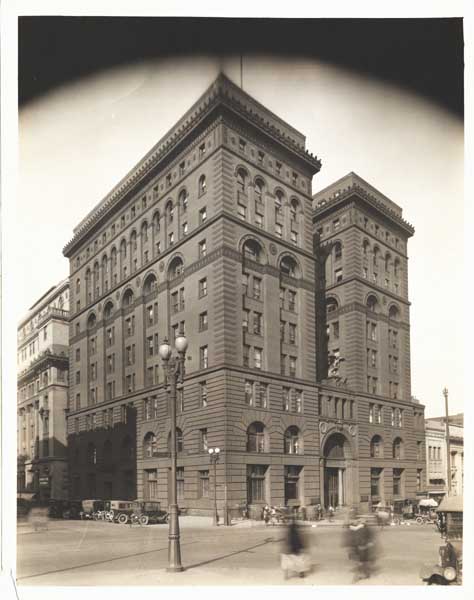|
First Unitarian Church of Omaha - Archive 1898 Antique Quilt |
| QUILT HOME | • History Overview • Gallery • |
Omaha in 1898 by Kim Dunovan, First Unitarian Church Quilt Project Coordinator
When I first saw the antique quilt, the listing of four women-owned businesses made an immediate impression on me. These businesses weren’t the saloons or brothels I half expected from popular television and movies depicting life in a frontier town. Listed on the quilt is Mrs. J. Benson, who came to Omaha in 1887 and opened a fancy dry goods store in the YMCA Building that employed as many as thirteen “salesladies”. Mrs. Clara Taylor engaged in dressmaking on 17th Street, Misses Kahl and Johnston sold fine millinery and Miss Julia Vaughn’s School for the Cure of Stammering was located in Omaha’s first skyscraper, the New York Life Building. I wondered, what was Omaha like in 1898 for these enterprising women business owners? With a population of just over 100,000, Omaha in 1898 was hardly the frontier town of my imagination. The downtown streets were mainly lighted and paved and two bridges over the Missouri allowed for a free flow of commerce and people between Omaha and Council Bluffs. Electric railway cars providing public transportation on some of the streets shared the road with horse-drawn wagons. The first “horseless carriage” wouldn’t be seen in Omaha until 1899. Just like today, there existed an economic interdependence between Omaha and rural Nebraska, so when a severe drought in the 1890’s caused crop prices to plummet, Omaha suffered. In 1893, Figaro, an Omaha weekly, published that there were "two thousand people in Omaha homeless and absolutely without means of support” and readers were urged to "give at least one of these unfortunates a place to sleep and enough to eat to sustain life without actual misery." But the 1890’s were not all doom and gloom. Influential businessmen purchased the props and decorations from the New Orleans Mardi Gras, and in 1895 formed the Knights of Ak-Sar-Ben and held the first Coronation Ball for the King and Queen of Quivira. That same year, in the middle of the economic malaise, planning began for the Trans-Mississippi Exposition. The exposition opened in 1898, drawing over 2.6 million people to Omaha and its exhibits, and turning a profit to help lift the city out of its financial doldrums. And apparently I wasn’t the only one confused about what life was like in Omaha in 1898. According to William Broadfield’s book Stories of Omaha, published in 1898, “The buffalo and wild tribes have disappeared from the plains’ but the citizens from the East and Europe still suppose the “wild west shows” truly picture Nebraska of today. The great work of the Trans-Mississippi Exposition is to disabuse their minds of these false impressions.” |
||
